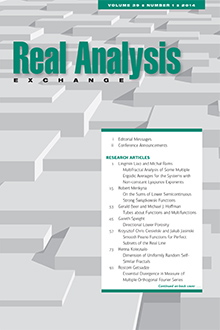Abstract
Let $f$ be a real (or complex) function with domain $D_f$ containing the positive integers. We introduce the functional sequence $\{ f_{\sigma _n}(x) \}$ as follows:$f_{\sigma _n}(x)=xf(n)+\sum_{k=1}^n(f(k)-f(x+k))$ and say that the function $f$ {\sl limit summable} at the point $x_0$ if the sequence $\{ f_{\sigma _n}(x_0) \}$ is convergent, $( f_{\sigma _n}(x_0)\rightarrow f_\sigma (x_0)) \; {\mbox as} \; n \rightarrow \infty$, and we call the function $f_\sigma(x)$ as the limit summand function (of $f$). In this article, we first give a necessary condition for the limit summability of functions and present some elementary properties. Then we prove some tests about limit summability of functions and consider the relation between $f(x)$ and $f_\sigma(x)$. One of the main theorems in this paper gives a uniqueness conditions for a function to be a limit summand function. Finally, as a consequence of this theorem we deduce a generalization of a result due to Bohr-Mollerup.
Citation
M. H. Hooshmand Estahbanti. "Limit Summability of Real Functions." Real Anal. Exchange 27 (2) 463 - 472, 2001/2002.
Information





